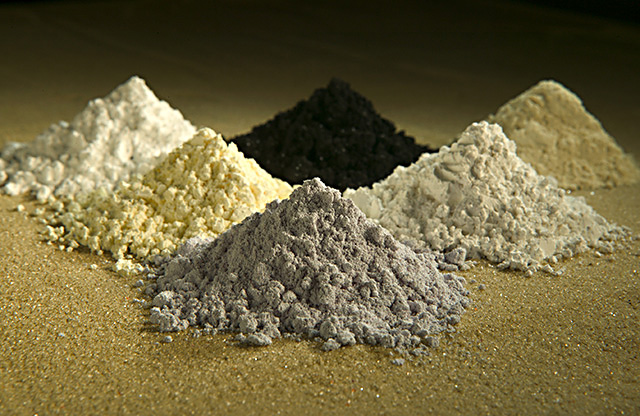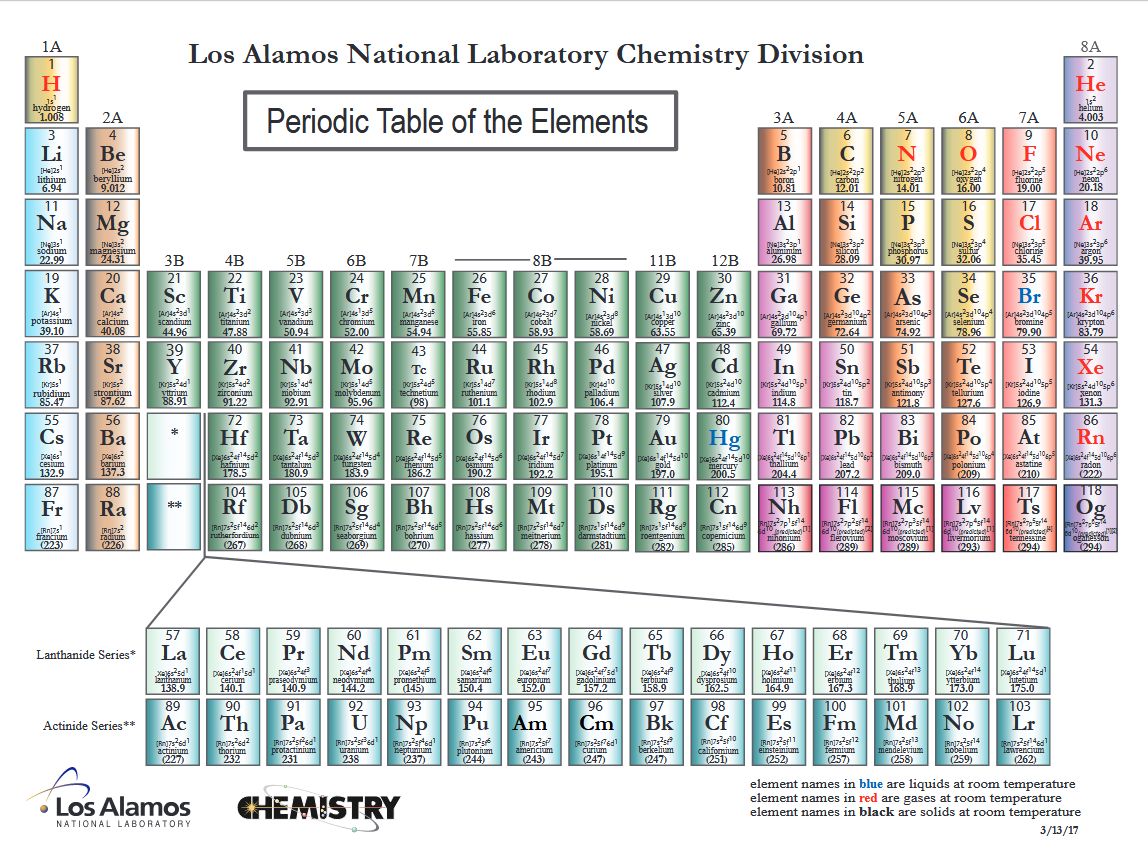
Most of us are familiar with elements – the building blocks of matter. Most of us know about elements such as oxygen, nitrogen, carbon, sulfur, sodium, and helium. Yet, there are other elements few have even heard of, despite their immense technological and medical importance. Are you familiar with the rare earth metals?
Allow me to introduce them: what are they good for, and where do they come from?
Rare Earth Metals
Among the less commonly known elements are the rare earth metals. These elements have many important uses, such as:
Rare earth metals are used in heat-resistant, powerful, permanent magnets.
They are employed in superconductors for cryogenics applications.
They are used in pyrophoric alloys for initiating combustion.
And they incorporated in compact fluorescent lighting, light-emitting diodes and fiber optics.
To be better informed in discussing these elements, it is appropriate to consult the Periodic Table of the Elements.
Periodic Table: Begin at the Beginning
The Periodic Table of the Elements is a chart of all the known atomic varieties. The more than 100 elements now known are positioned in the chart designed to feature,
The number of protons in their nuclei.
Their electron configuration.
Their recurring chemical properties.
Elements are laid out horizontally and vertically in the chart so that all three of the above features are properly represented.
The properties of elements within a particular group bear an almost familial relationship with each other. They accordingly bear descriptors such as alkali metals, alkaline earth metals, halogens, and inert gases.
Larger groups are more generally described as transition metals, metalloids, and non-metals.
Orbital Filling
However, electron orbital filling behavior alters significantly on reaching the 3rd electron shell. This requires the chart to deviate from the norm, beginning with scandium, atomic number 21. Particularly is this so for elements 57 to 70 (the Lanthanides) and elements 89 to 102 (the Actinides).
The Rare Earths
The rare earth elements (REE) or rare earth metals (REM), of which there are 15 in number, occur together in nature with two non-lanthanide elements, scandium and yttrium. All 17 elements behave similarly chemically. Although scandium and yttrium are considered transition metals, they are in at least some sense part of the same group as the lanthanides. The term earths applies to REM oxides.
Identification
The 17 rare earth metals, by name and atomic weight, are scandium (21), yttrium (39), lanthanum (57), cerium (58), praseodymium (59), neodymium (60), promethium (61), samarium (62), europium (63), gadolinium (64), terbium (65), dysprosium (66), holmium (67), erbium (68), thulium (69), ytterbium (70), and lutetium (71).
Sources in Nature
Monazite deposits of the rare earth metals are phosphate minerals most commonly found in India, Madagascar, and Africa. A preferred modern source is bastnäsite, which is a carbonate-fluoride mineral found in Burundi.
By far the most plentiful of the rare earth metals in these “ores” is cerium. Oh, yes, there are other rare earth metal ores. Geology.com informs us there are other sources of rare earth metals, including apatite, cheralite, eudialyte, loparite, phosphorites, rare-earth-bearing (ion adsorption) clays, secondary monazite, spent uranium solutions, and xenotime.
How Plentiful? How Useful?
Curiously, rare earth metals are not particularly rare. In fact, most of them are more common in earth’s crust than silver is. Many are more abundant than lead. Some are even more common than copper! This is most surprising. The REMs seem almost shrouded in secrecy. Some have wondered, “Is this somehow due to their technological importance?” In fact, China, a major-league technology production player, is limiting their export.
Time Worth Spending
In view of the recent advances in technology through materials science, rare earth metals have become more interesting to developing nations.
Note: You might also enjoy Initiating a Fission Chain Reaction: What is Critical Mass?
References:
- American Chemistry Council, Inc.. Rare Earth Technology Alliance. (2013-2015)
- United States Geological Survey: The Rare Earth Elements: Vital to Modern Technology and Lifestyles. (2014)
- Mining-Technology.com: Scarce supply – the world’s biggest rare earth metal producers. (2015)
- Tasman Metals Ltd.: Rare Earth Elements Ores and Minerals
- Geology.com: REE – Rarer Earth Elements and Their Uses. (2005-2016)

[…] polar strategy is linked to the prospect of finding deposits of “rare earth materials,” such as praseodymium, yttrium, and lanthanum, which are used in lasers, magnets, […]
[…] polar strategy is linked to the prospect of finding deposits of “rare earth materials,” such as praseodymium, yttrium, and lanthanum, which are used in lasers, magnets, […]
[…] polar strategy is linked to the prospect of finding deposits of “rare earth materials,” such as praseodymium, yttrium, and lanthanum, which are used in lasers, magnets, […]
[…] polar strategy is linked to the prospect of finding deposits of “rare earth materials,” such as praseodymium, yttrium, and lanthanum, which are used in lasers, magnets, […]
[…] polar strategy is linked to the prospect of finding deposits of “rare earth materials,” such as praseodymium, yttrium, and lanthanum, which are used in lasers, magnets, […]
[…] polar strategy is linked to the prospect of finding deposits of “rare earth materials,” such as praseodymium, yttrium, and lanthanum, which are used in lasers, magnets, […]
[…] polar strategy is linked to the prospect of finding deposits of “rare earth materials,” such as praseodymium, yttrium, and lanthanum, which are used in lasers, magnets, […]
[…] polar strategy is linked to the prospect of finding deposits of "rare earth materials," such as praseodymium, yttrium, and lanthanum, which are used in lasers, magnets, […]
[…] polar strategy is linked to the prospect of finding deposits of “rare earth materials,” such as praseodymium, yttrium, and lanthanum, which are used in lasers, magnets, […]
[…] polar strategy is linked to the prospect of finding deposits of “rare earth materials,” such as praseodymium, yttrium, and lanthanum, which are used in lasers, magnets, […]
[…] polar strategy is linked to the prospect of finding deposits of “rare earth materials,” such as praseodymium, yttrium, and lanthanum, which are used in lasers, magnets, […]
[…] polar strategy is linked to the prospect of finding deposits of “rare earth materials,” such as praseodymium, yttrium, and lanthanum, which are used in lasers, magnets, […]
[…] polar strategy is linked to the prospect of finding deposits of “rare earth materials,” such as praseodymium, yttrium, and lanthanum, which are used in lasers, magnets, […]
[…] polar strategy is linked to the prospect of finding deposits of “rare earth materials,” such as praseodymium, yttrium, and lanthanum, which are used in lasers, magnets, […]
[…] polarstrategi er forbundet med udsigten til at finde lagre af “sjældne undergrundsstoffer,” så som praseodym, yttrium og lanthan, som bruges i lasere, magneter, halvledere, […]
[…] polarstrategi er forbundet med udsigten til at finde lagre af “sjældne undergrundsstoffer,” så som praseodym, yttrium og lanthan, som bruges i lasere, magneter, halvledere, […]
[…] polarstrategi er forbundet med udsigten til at finde lagre af “sjældne undergrundsstoffer,” så som praseodym, yttrium og lanthan, som bruges i lasere, magneter, halvledere, […]
[…] polarstrategi er forbundet med udsigten til at finde lagre af “sjældne undergrundsstoffer,” så som praseodym, yttrium og lanthan, som bruges i lasere, magneter, halvledere, […]
[…] polarstrategi er forbundet med udsigten til at finde lagre af “sjældne undergrundsstoffer,” så som praseodym, yttrium og lanthan, som bruges i lasere, magneter, halvledere, […]